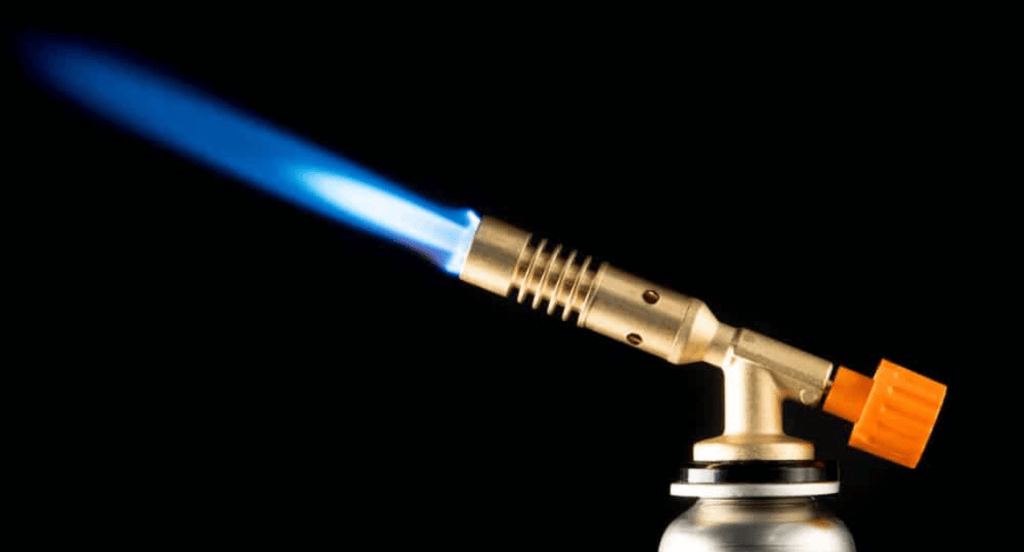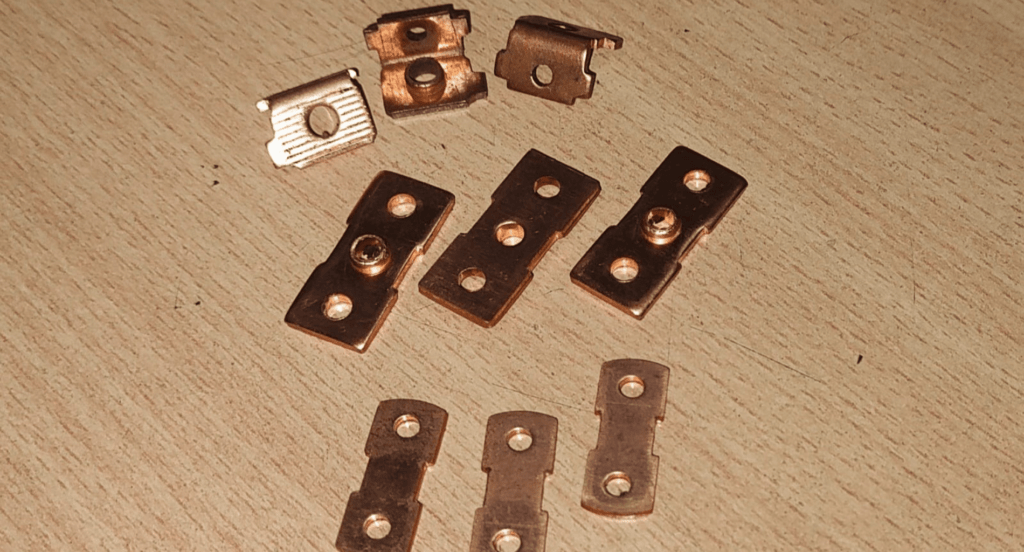Does bending copper sheet present challenges in the metal fabrication process? Mastering the art and science of bending copper sheets leads to unique and precise results.
With years of experience in metal fabrication, I bring practical insights and proven techniques. Trust these tips to enhance work with copper.
Bending copper sheets requires precision and understanding of the material’s properties. It’s a critical skill that can se fabrication work apart, ensuring quality and durability in every project.
The upcoming sections offer essential strategies and insights into bending copper sheets, including tool selection and understanding copper’s properties.
Keep reading for an insightful journey into mastering copper bending techniques.
1. Understanding Copper Sheet Properties
Copper, a versatile and widely used metal, is known for its excellent electrical and thermal conductivity. It’s a soft, malleable material, making it ideal for bending and shaping in metal fabrication. The flexibility of copper sheets allows for intricate designs, yet it maintains strength and durability. This balance of properties makes copper a popular choice in various industries, from electrical components to decorative items.
I’ve always appreciated copper for its unique blend of beauty and functionality. Its ability to resist corrosion and high temperatures enhances its longevity in applications. The growth of the global copper market, as reported by Zion Market Research, is a testament to its demand and versatility. With copper’s expected 5.5% annual growth from 2023 to 2030, its use in metal fabrication is increasingly vital.

2. Tools and Equipment for Bending Copper Sheets
After understanding copper sheet properties, it’s essential to choose the right tools and equipment for bending them effectively. Quality tools simplify bending, enhance precision, and minimize waste. Below are the essential tools and equipment:
Bench-top Sheet Metal Brake
Ideal for creating clean, straight bends; perfect for both small and large projects. This tool is versatile and can handle various thicknesses of copper sheeting. It’s a must-have for consistent, high-quality bends in any fabrication workshop. In my experience, the Bench-top Sheet Metal Brake has always been a reliable and invaluable asset in the workshop.

Rolling Mill
Used for curving metal sheets into cylindrical shapes, offering uniform thickness throughout the bend. This tool is especially useful for creating tubes or rings out of copper sheets. Its precision in maintaining thickness is key for structural integrity and aesthetic appeal. Plus, it’s great for high-volume production due to its efficiency and speed.

Metalworking Hammer and Anvil
Essential for manual shaping and forming, allowing for custom bends and intricate work. They are perfect for adding artistic touches or adjusting details on copper pieces. Their versatility makes them invaluable for any metalworker’s toolkit. A skilled craftsman can achieve remarkable detail and finesse with these tools. For example, creating a beautifully detailed copper leaf pattern is a breeze with the right hammer and anvil.

Tube Bender
Specifically designed for bending copper tubing, ensuring precise angles without crimping or flattening the tube. This tool is critical for plumbing and HVAC applications, where accuracy is paramount. It’s a staple for any project involving copper pipes. The tube bender’s ability to handle various diameters and bend radii makes it a versatile addition.

Heat Gun or Blowtorch
Useful for annealing copper, making it more malleable and easier to bend without breaking. These tools are crucial for complex bends or when working with thicker copper sheets. They allow for more flexibility and creativity in the design process. Moreover, they can be used to achieve a variety of finishes on the copper surface, enhancing its aesthetic value.

3. Bending Techniques for Copper Sheets
After selecting the appropriate tools and equipment, mastering various bending techniques is the next step to effectively shape copper sheets. Here are key bending techniques for precise, visually appealing copper sheet outcomes:
Cold Bending
This involves bending the copper sheet at room temperature. It’s suitable for thin sheets and requires minimal equipment. This method is great for quick, on-site adjustments and is very cost-effective. It also preserves the metal’s integrity, making it ideal for delicate designs. Moreover, cold bending is environmentally friendly as it doesn’t require additional energy sources.
Heat-Assisted Bending
Using a heat source like a blowtorch to make the copper more malleable. This is ideal for thicker sheets or complex bends. The heat softens the copper, allowing for more dramatic and intricate bends without cracking the metal. It’s a go-to technique for creating custom shapes and designs. This method can bring out unique colorations in copper, adding an artistic touch.
Roll Bending
Utilizing a rolling mill to gradually curve the copper sheet. Perfect for creating smooth, continuous curves. This method ensures uniformity across the bend and is excellent for large-scale productions. Roll bending is also used to create cylindrical or conical shapes in copper sheets. Zemetal rolling mills stand out for their robust design and reliability in producing consistent curves.
Press Brake Bending
Employing a press brake machine for precise, angular bends. Suitable for industrial applications requiring high accuracy. This technique offers unparalleled control over bend angles and dimensions, making it essential for mass production with tight tolerances. In my years of metalworking, I’ve always been impressed by the precision and efficiency of the press brake machine.

Hammer Forming
A traditional method using a hammer and anvil for detailed, custom shaping. Best for artisanal or decorative pieces. This hands-on approach allows for unique, one-of-a-kind creations, showcasing the skill and craftsmanship of the metalworker. Hammer forming is particularly favored in restorative work and artistic metal crafting.

4. Applications of Bent Copper Sheets
After mastering the bending techniques, the next exciting phase is exploring the various applications of bent copper sheets. Explore the diverse and aesthetic applications of bent copper sheets:
Architectural Elements
Copper is widely used in roofing, gutter systems, and decorative facades due to its durability and rustic charm. Its resistance to corrosion makes it ideal for exterior applications, ensuring long-term structural integrity. Copper adds an elegant, timeless aesthetic to buildings, enhancing their overall appearance. The way copper transforms a building’s exterior into a work of art is truly remarkable.

Art and Sculpture
Artists often choose copper for sculptures and decorative pieces, valuing its malleability and unique patina that develops over time. This patina adds character and depth to art pieces, making each creation distinct. Copper’s flexibility also allows artists to experiment with intricate designs and shapes. For instance, a copper sculpture of a tree can showcase detailed leaves and branches, each with a unique texture and hue.

Electrical Components
Due to its excellent conductivity, bent copper sheets are key components in electrical transformers, wiring, and other conductive applications. Their reliability in conducting electricity efficiently makes them indispensable in power distribution systems. Additionally, copper’s ductility allows for easy shaping into various electrical components.

Automotive Parts
Copper sheets are used in various automotive components like radiators and battery connectors for their heat and electrical conductivity. This makes them essential in managing engine temperatures and ensuring efficient electrical systems. Their durability also contributes to the longevity of automotive parts. The use of copper in these parts can improve vehicle performance and energy efficiency.
Custom Furniture and Fixtures
Designers frequently use bent copper sheets for creating bespoke furniture pieces and fixtures, offering a distinctive look and feel. Copper’s natural beauty brings a warm, inviting ambiance to interiors. It also allows for unique, customizable designs that can fit any aesthetic. Copper’s versatility in design is unmatched, providing endless possibilities for creative expression in furniture making.
5. Safety Measures in Copper Bending
After exploring the various applications of bent copper sheets, it’s crucial to emphasize the importance of safety measures in the bending process. Below are the essential safety measures for copper bending:
Wear Protective Gear
Always use gloves, safety goggles, and appropriate clothing to protect against cuts and heat exposure. The right gear can prevent burns from hot copper or machinery. Additionally, long-sleeved shirts and pants can shield skin from metal shards and sparks. Ensuring everyone is properly geared up before starting is non-negotiable. Remember, safety always comes first in any metalworking project.
Prioritizing safety gear is fundamental in metalworking projects, as depicted in the table below.
| Safety Gear | Purpose |
| Gloves | Protects hands against cuts, heat exposure, and metal shards. |
| Safety Goggles | Shields eyes from sparks, metal shards, and potential chemical splashes. |
| Appropriate Clothing | Helps prevent burns from hot metals and provides a barrier against sparks or cuts. |
| Long-Sleeved Shirts | Shields skin from metal shards, sparks, and potential heat exposure. |
| Pants | Offers protection against metal fragments, sparks, and heat exposure. |
Proper Ventilation
When using heat-assisted bending techniques, ensure adequate ventilation to avoid inhaling fumes. Exposure to copper fumes can be hazardous, so it’s important to work in a well-ventilated area or use exhaust systems. Also, consider using respiratory protection when necessary. Installing air filtration systems can further enhance safety in environments where extensive heating is used.
Regular Equipment Maintenance
Keep all tools and machinery in good condition to prevent accidents caused by malfunctioning equipment. Regular checks and timely repairs ensure that machines work efficiently and safely. This also extends the life of the equipment, making it a cost-effective practice. A well-maintained tool is as important for safety as it is for production.
Clear Work Area
Keep the workspace free of clutter and potential hazards to allow safe movement and reduce the risk of accidents. A tidy area not only prevents trips and falls but also helps in locating tools and materials easily. Organized workspaces also improve productivity and focus. Zemetal workshops prioritize cleanliness and organization for optimal safety and efficiency.
Training and Awareness
Ensure all workers are trained in copper bending techniques and aware of the potential risks involved. Continuous education on safety practices is vital, especially when new techniques or equipment are introduced. Encouraging a culture of safety in the workplace reduces the likelihood of accidents and injuries. Regular safety drills and workshops can significantly enhance awareness and preparedness among workers.
6. Troubleshooting Common Bending Issues
After implementing the necessary safety measures, it’s important to address common challenges that arise in the copper bending process. Here are key solutions for common copper bending issues:
Cracking or Fracturing
Often occurs when bending copper that is too thick or cold. Anneal the copper to soften it before bending or using thinner sheets. Annealing involves heating the copper to a specific temperature and then cooling it, which relaxes the metal’s structure. Annealing has been a game-changer for working with tougher copper sheets.
Inaccurate Bend Angles
Caused by improper tool setup or technique. Ensure precise calibration of tools and double-check measurements before bending. It’s also helpful to use a template or jig for consistent bending angles, especially for repetitive tasks. Regular practice and technique refinement can also greatly reduce this issue. Using digital angle finders can provide additional accuracy for complex bending angles.
Warping of the Sheet
Happens due to uneven pressure during the bending process. Apply consistent pressure and use the correct tools for the thickness of the copper. Warping can also be minimized by evenly distributing the bending force along the entire length of the bend. Additionally, supporting the sheet on both sides of the bend can help maintain its shape.
Springback
Copper tends to revert slightly after bending. Solution: Overbend slightly to compensate for the expected springback. The amount of springback can vary based on the copper’s thickness and hardness, so it may take some trial and error to determine the right amount of overbending. Using a bending brake with adjustable settings can also help manage springback effectively.
7. 5 Factors to Consider When Bending Copper Sheets
After addressing common bending issues, it’s essential to consider certain factors before starting the bending process of copper sheets. Here are key factors to consider for optimal results in copper sheet bending:
#1 Thickness of the Copper Sheet
Thicker sheets require more force and often pre-heating, while thinner sheets are more prone to warping and require delicate handling. Pre-heating thicker sheets can prevent cracking and make bending easier. For thinner sheets, using supportive backing can help maintain shape and prevent warping. I’ve always found that taking the time to assess sheet thickness can save a lot of effort and materials in the long run.
#2 Type of Bend Required
Different bends (sharp, gradual, complex shapes) require different techniques and tools. Sharp bends might need stronger tools like press brakes, while gradual bends can be achieved with rollers. Complex shapes may require a combination of techniques and specialized tools. It’s also important to consider the end use of the piece when selecting the bending method to ensure functionality and aesthetics.
#3 Copper’s Grain Direction
Bending parallel to the grain results in easier and cleaner bends, whereas bending against the grain can lead to cracks. Identifying the grain direction before bending can save time and reduce waste. Bending against the grain should be avoided unless absolutely necessary, and then done with caution. Additionally, working with the grain can enhance the strength and appearance of the final product.
#4 Condition of Metal
The presence of impurities, previous work-hardening, and overall quality of the copper can affect the bending process. Metals with high levels of impurities or extensive work-hardening may require annealing before bending. Checking the metal’s condition beforehand can help you adjust your approach accordingly. Understanding the metal’s history and treatment can also provide insights into its behavior during bending.
#5 Temperature and Environmental Conditions
Copper behaves differently under varying temperatures and humidity levels, which can affect bending outcomes. In colder environments, copper becomes more brittle and may require pre-heating. Conversely, in warmer or more humid conditions, the metal may be more malleable but also more prone to oxidation. Adapting the bending process to these conditions can prevent defects and maintain the metal’s integrity.
Conclusion
In summary, this guide provides comprehensive insights into the art of bending copper sheets, covering everything from understanding copper properties to safety measures. It’s an invaluable resource for anyone looking to enhance their metal fabrication skills and achieve high-quality results.
For expert assistance and top-notch metal fabrication tools, consider Zemetal as your go-to partner. To explore our range of products and services, or for any inquiries, don’t hesitate to contact us.
Dive Deeper Into Our Resources
Looking for more diverse service options? Browse through our handpicked selections:
For some insightful reads, we’ve curated a list of recommended articles just for you:
Still haven’t found what you’re looking for? Don’t hesitate to contact us. We’re available around the clock to assist you.








